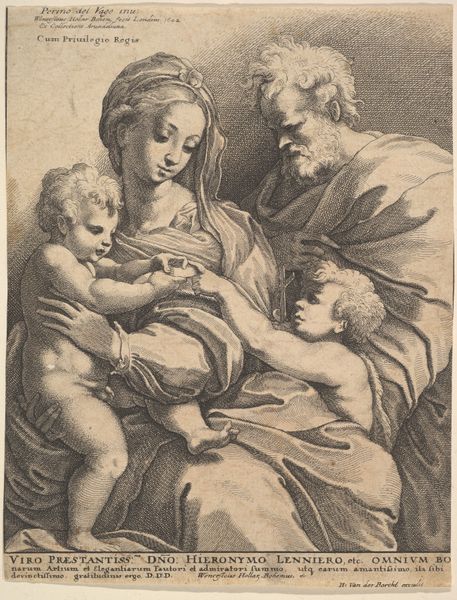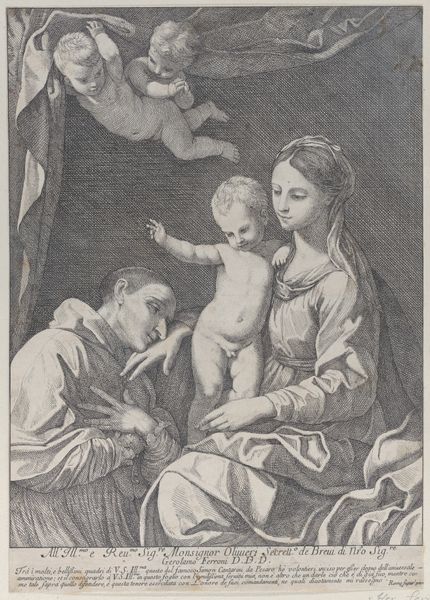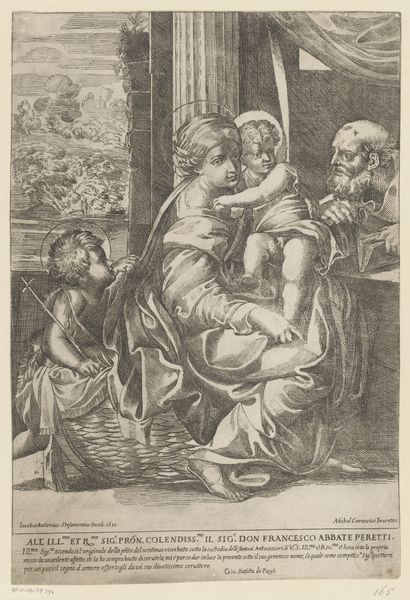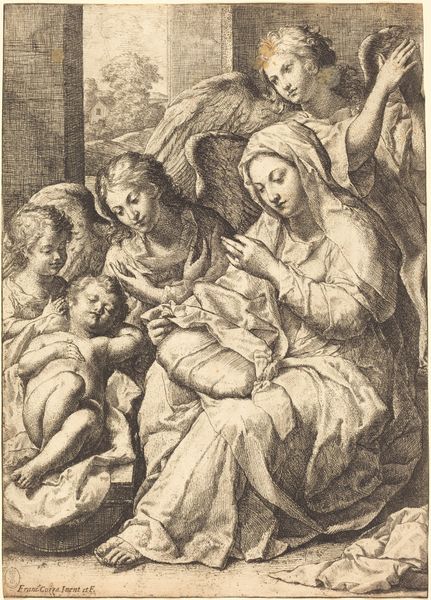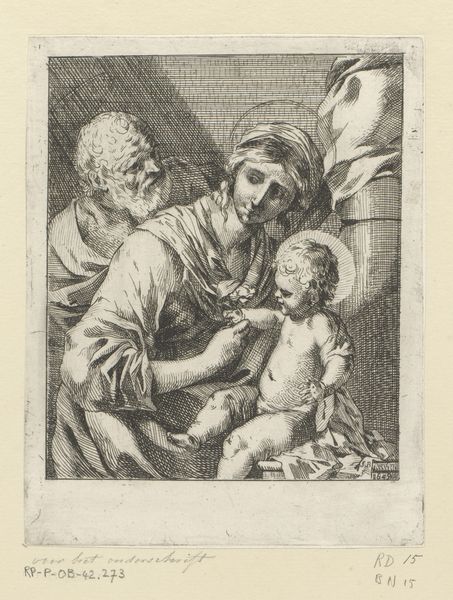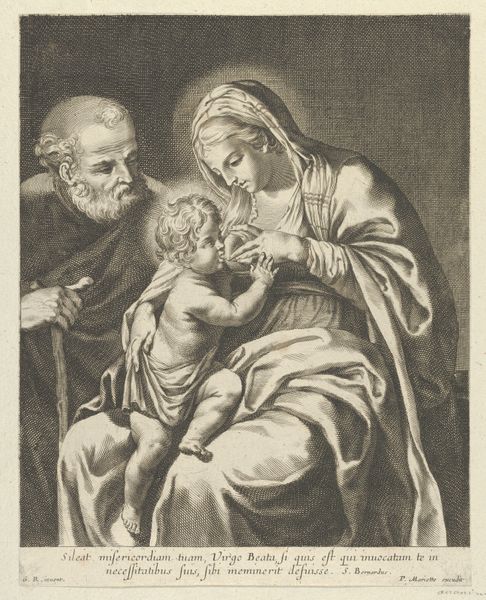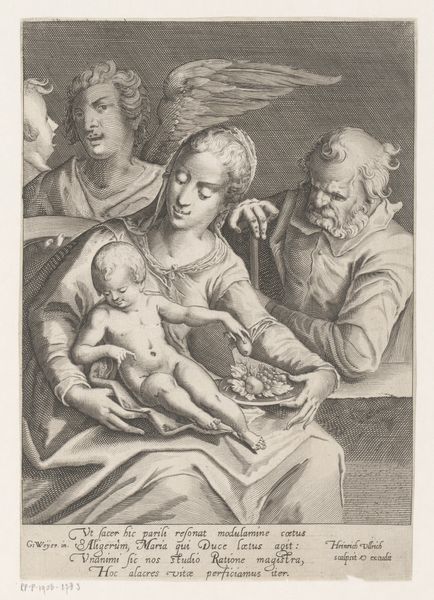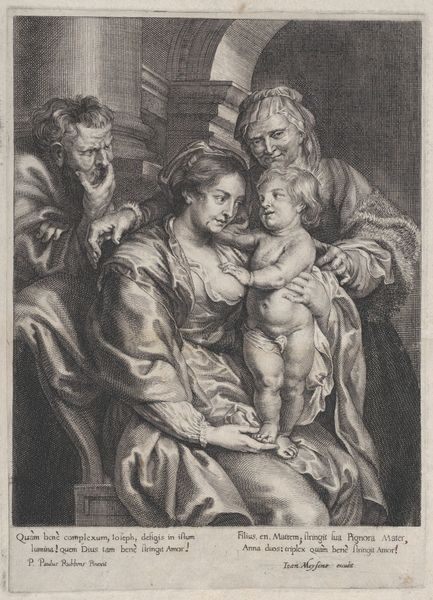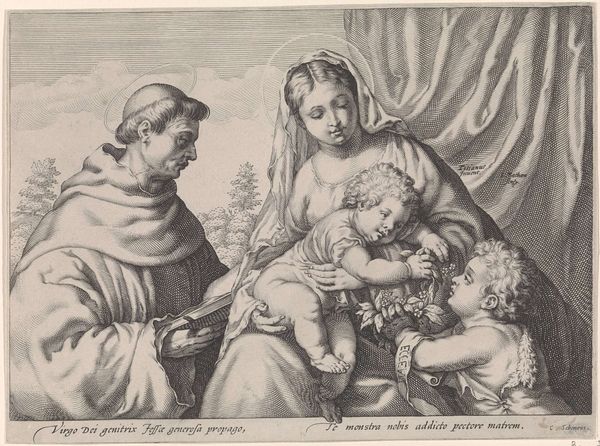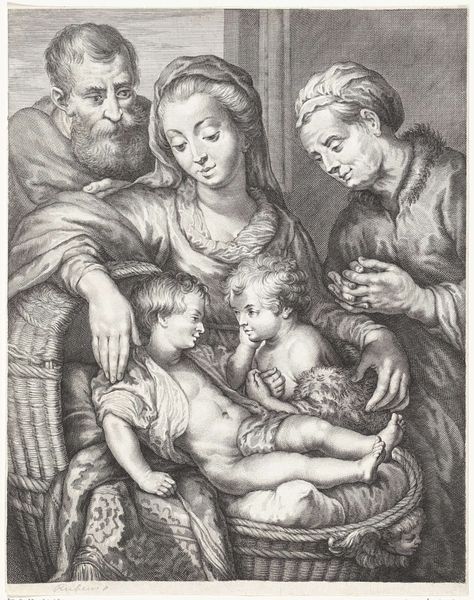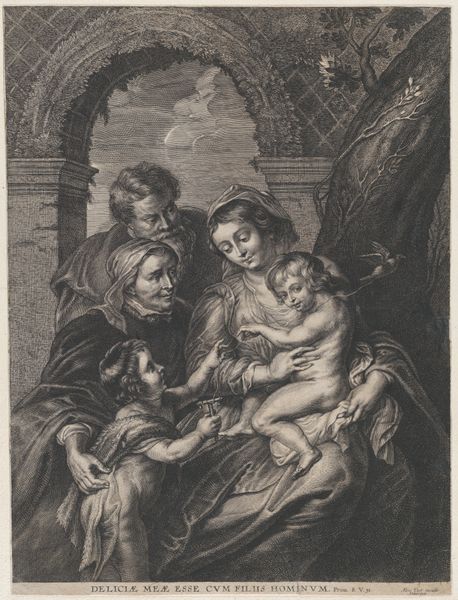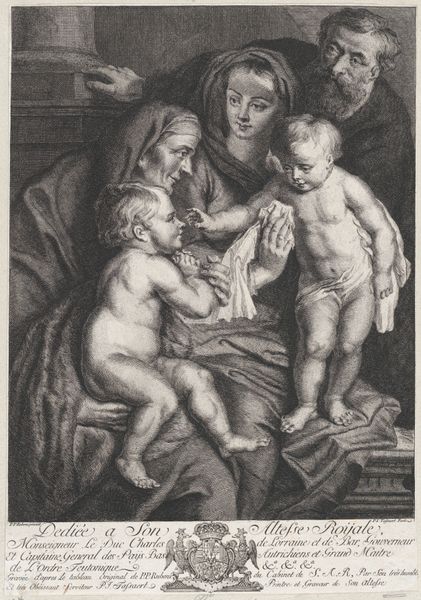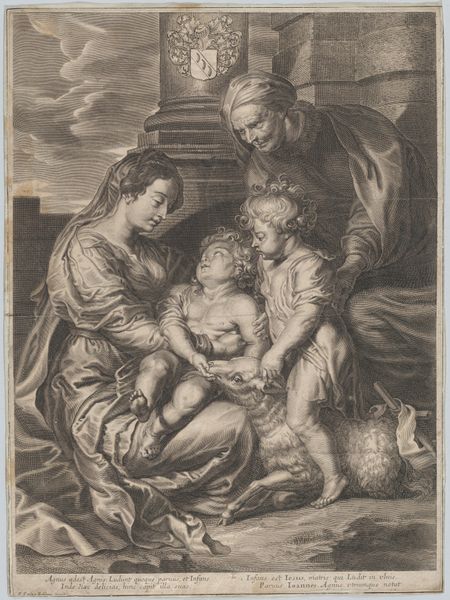
print, engraving
#
portrait
#
baroque
# print
#
old engraving style
#
classical-realism
#
figuration
#
portrait reference
#
group-portraits
#
limited contrast and shading
#
line
#
portrait drawing
#
history-painting
#
italian-renaissance
#
engraving
#
realism
Dimensions: height 388 mm, width 280 mm
Copyright: Rijks Museum: Open Domain
Curator: Let's consider this engraving, "Heilige Familie met Johannes de Doper," or "Holy Family with John the Baptist," created after 1620 by Sébastien Vouillemont. What's your initial read on this image? Editor: It feels very… delicate, almost fragile. The fine lines of the engraving lend a soft, dreamlike quality to the scene. I'm immediately drawn to the textural detail. The different robes are amazing, the hair textures are so intricately shown, all with a careful control of the medium. How was it made? Curator: Vouillemont masterfully used the engraving technique, cutting lines into a metal plate, which was then inked and printed. Considering the socio-political landscape of the early 17th century, especially with religious reformations underway, such an image, focusing on familial piety, has specific intent. The patronage behind its making is interesting, who was commissioning prints like this, what purpose would it serve. Editor: Right, but more than its spiritual theme, look closely: each line, each shadow, meticulously crafted. It highlights the labor involved in creating and circulating these images. This wasn’t just about disseminating religious ideas, but it also represented a complex material process that should be considered in our study. Curator: Precisely. And thinking about its circulation, consider who had access to such images? How did this idealized representation of the Holy Family affect perceptions of gender roles, particularly for women, in that era? The gentle portrayal of Mary, surrounded by the male figures of her family and the young John the Baptist, can be viewed through a feminist lens to interrogate power dynamics. Editor: It makes one wonder how printmakers during the era actually gained access to models in order to work. How much of that production process influenced gender itself, and what are the underlying implications? Curator: Indeed. This print isn't simply a devotional image, but a convergence of artistic labor, religious ideology, and societal structures that shaped early modern identities. The print served a purpose as an exercise in power on different social and religious levels. Editor: Reflecting on the piece through a lens that considers materials and labor brings to light this amazing display of practical artisanship that so greatly contributes to our understanding of both the material circumstances, and their effect on religious iconography. Curator: Thinking intersectionally enriches our viewing and interpretation of it and gives us a window onto gender, class, and religion during the Counter-Reformation.
Comments
No comments
Be the first to comment and join the conversation on the ultimate creative platform.
